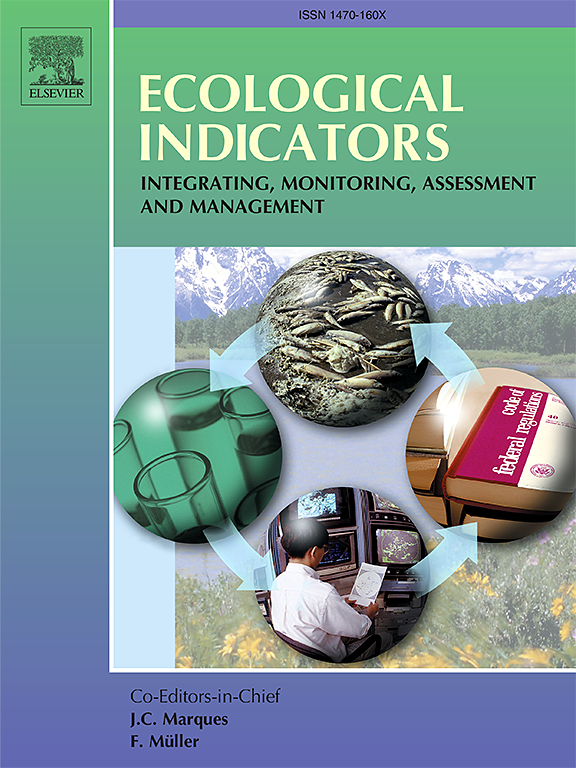Soil carbon metabolizing microorganisms affect the storage and stability of carbon pool in degraded alpine meadows
IF 7
2区 环境科学与生态学
Q1 ENVIRONMENTAL SCIENCES
引用次数: 0
Abstract
The carbon pool of alpine meadows exerts an important impact on global climate change. Soil carbon metabolizing microorganisms play a crucial role in the storage and stability of carbon pools in ecosystems. However, the role and mechanism of soil carbon metabolizing microorganisms in alpine meadows’ carbon pools are not yet clearly understood. This study aims to fill this knowledge gap by selecting non-degraded alpine meadows (ND), slightly degraded alpine meadows (LD), moderately degraded alpine meadows (MD), and heavily degraded alpine meadows (HD) as the research objects. The response of soil carbon metabolizing microorganisms to meadow degradation and their impact on meadow carbon pools were analyzed via studying the carbon storage and the functional genes of carbon metabolism-related microorganisms (pmoA, cbbL, mcrA, chiA) in the four types of alpine meadow ecosystems. The results showed that the carbon storage in the MD and HD ecosystems decreased by 23.9 % and 32.9 %, respectively (P < 0.05), in comparison with ND. With the continuous degradation of alpine meadows, the α diversity of methanotrophs and chitinase-producing microorganisms gradually decreased, while the α diversity of soil carbon-fixing microbes and methanogens communities increased. Co-occurrence network analysis showed that two major methanotrophs modules (pmoA_Mod2,4), one major soil carbon-fixing microbe module (cbbL_Mod5) and two major chitinase-producing microorganism modules (chiA_Mod1,4) were significantly affected by meadow degradation. Due to changes in the β diversity of the soil carbon-fixing microorganism communities, and an increase in the α diversity of methanogens communities, the degradation of alpine meadows decreased the carbon sequestration capacity of the ecosystem, increased the decomposition ability, and ultimately reduced carbon storage in the meadow ecosystems. Additionally, the relative abundance of the chitinase-producing microorganism network module (chiA_Mod1) which primarily comprises genera capable of antibiotic production such as Janthinobacterium, Amycolatopsis methanolica, and Streptomyces, also significantly decreased due to meadow degradation (P < 0.05), thereby affecting carbon cycling in the ecosystems. This study reveals how four carbon-metabolizing microbial communities respond to alpine meadow degradation and their impact on carbon pool storage and stability, providing a theoretical basis for the protection and sustainable development of alpine meadows.
求助全文
约1分钟内获得全文
求助全文
来源期刊

Ecological Indicators
环境科学-环境科学
CiteScore
11.80
自引率
8.70%
发文量
1163
审稿时长
78 days
期刊介绍:
The ultimate aim of Ecological Indicators is to integrate the monitoring and assessment of ecological and environmental indicators with management practices. The journal provides a forum for the discussion of the applied scientific development and review of traditional indicator approaches as well as for theoretical, modelling and quantitative applications such as index development. Research into the following areas will be published.
• All aspects of ecological and environmental indicators and indices.
• New indicators, and new approaches and methods for indicator development, testing and use.
• Development and modelling of indices, e.g. application of indicator suites across multiple scales and resources.
• Analysis and research of resource, system- and scale-specific indicators.
• Methods for integration of social and other valuation metrics for the production of scientifically rigorous and politically-relevant assessments using indicator-based monitoring and assessment programs.
• How research indicators can be transformed into direct application for management purposes.
• Broader assessment objectives and methods, e.g. biodiversity, biological integrity, and sustainability, through the use of indicators.
• Resource-specific indicators such as landscape, agroecosystems, forests, wetlands, etc.
 求助内容:
求助内容: 应助结果提醒方式:
应助结果提醒方式:


